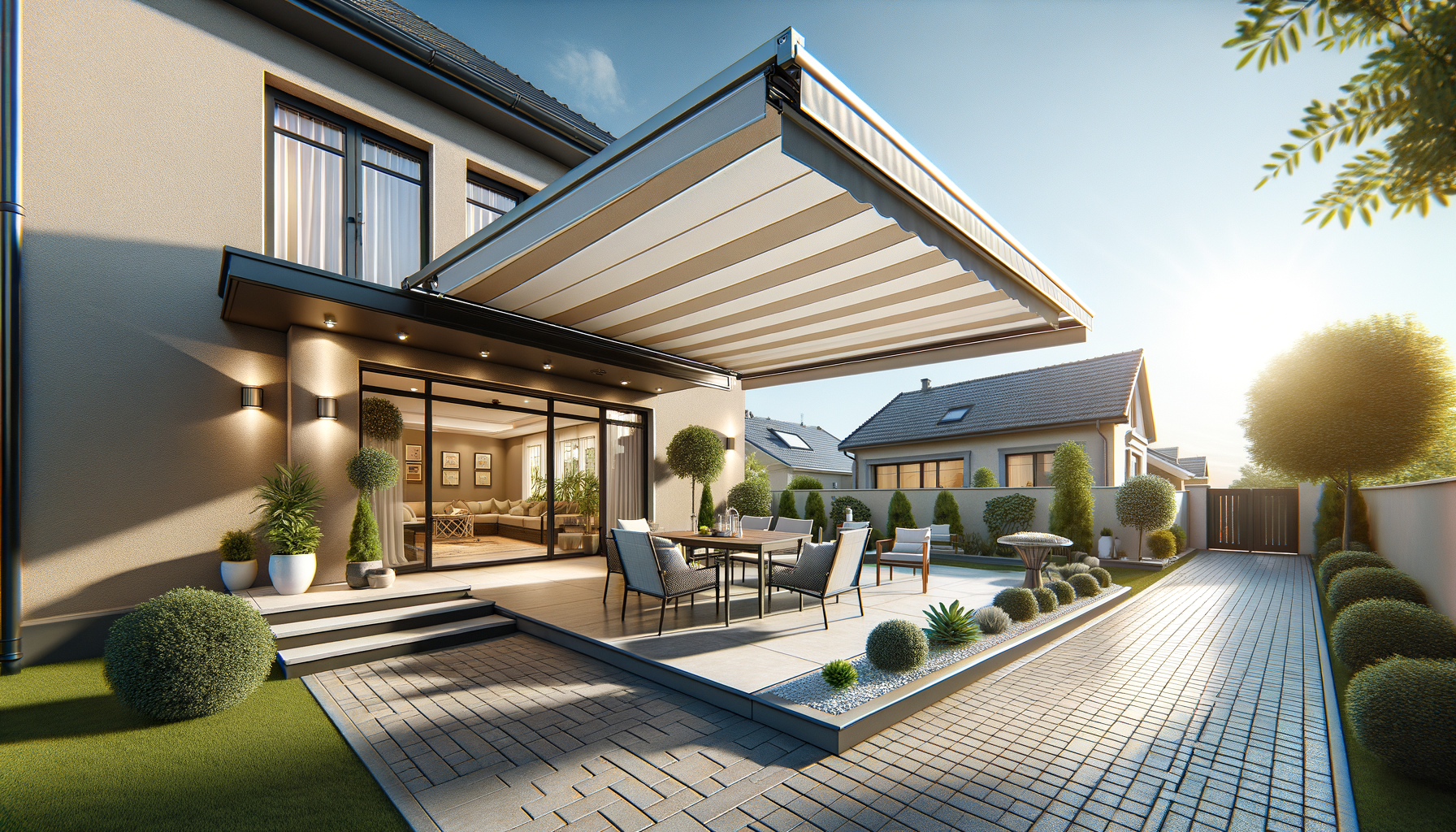
Versatility Meets Elegance: The Value of Retractable Awnings
The Rise of Retractable Awnings: A Modern Solution
Retractable awnings have become a staple in modern home design, offering a perfect blend of functionality and style. Their popularity has surged as homeowners and businesses alike seek to maximize outdoor spaces. Unlike traditional fixed awnings, retractable versions provide flexibility, allowing users to extend or retract the covering based on weather conditions or personal preference. This adaptability not only enhances the usability of outdoor areas but also contributes to energy efficiency by reducing indoor heat gain.
One of the key drivers behind the rise of retractable awnings is their ability to transform outdoor spaces into comfortable living areas. Whether it’s a patio, deck, or balcony, these awnings create a shaded oasis that protects against harmful UV rays while maintaining a pleasant temperature. This functionality is particularly beneficial in regions with intense sunlight, where the need for effective sun protection is paramount.
Moreover, retractable awnings are available in a variety of designs, colors, and materials, allowing homeowners to choose options that complement their architectural style. This customization potential ensures that retractable awnings not only serve a practical purpose but also enhance the aesthetic appeal of a property.
Material Choices: Durability Meets Design
The materials used in retractable awnings are crucial for ensuring longevity and performance. Common materials include acrylic fabrics, polyester, and vinyl-coated textiles. Each material offers unique benefits, making it important to consider specific needs when selecting an awning.
Acrylic fabrics are renowned for their durability and resistance to fading, making them a popular choice for areas with prolonged sun exposure. They offer excellent breathability, reducing heat build-up underneath the awning. Polyester, on the other hand, is valued for its strength and resistance to stretching, making it ideal for windy locations. Vinyl-coated textiles provide water resistance, making them suitable for regions with frequent rain.
Choosing the right material involves balancing aesthetics with functionality. Considerations such as climate, exposure to elements, and desired lifespan should guide the selection process. Ultimately, the material choice can significantly impact the overall performance and appearance of the awning.
Installation and Maintenance: Ensuring Longevity
Proper installation and maintenance are vital for maximizing the lifespan of retractable awnings. Installation should ideally be carried out by professionals to ensure structural integrity and optimal performance. This process involves securing the awning to a stable surface and ensuring that the mechanical components function smoothly.
Regular maintenance is equally important. This includes cleaning the fabric to prevent mold and mildew, lubricating moving parts, and inspecting for any signs of wear or damage. By addressing minor issues promptly, homeowners can prevent costly repairs and extend the life of their awning.
Moreover, retractable awnings should be retracted during severe weather conditions to prevent damage. This simple precaution can significantly enhance the durability of the awning, ensuring it remains a valuable addition to your home for years to come.
Energy Efficiency and Cost Savings
Retractable awnings contribute to energy efficiency by reducing the heat entering a building. By providing shade, they lower the indoor temperature, reducing the reliance on air conditioning. This translates to significant cost savings on energy bills, especially during hot summer months.
Additionally, retractable awnings protect indoor furnishings from sun damage, preserving their color and integrity. This protection reduces the need for frequent replacements or repairs, further contributing to cost savings over time.
Investing in retractable awnings is a financially sound decision, offering both immediate and long-term benefits. The initial cost is offset by the reduction in energy expenses and the extended lifespan of indoor furnishings.
Design Flexibility: Aesthetic Enhancements
Beyond their functional benefits, retractable awnings offer significant aesthetic enhancements. They are available in a wide range of colors, patterns, and styles, allowing homeowners to personalize their outdoor spaces. This design flexibility ensures that the awning complements the overall look of the property, enhancing its curb appeal.
Whether you prefer a minimalist design or a bold statement piece, there’s a retractable awning to suit your taste. This versatility makes them a popular choice for both residential and commercial properties, where visual appeal is as important as functionality.
The ability to retract the awning also provides flexibility in design, allowing for open skies when desired. This feature is particularly appreciated during cooler months or evenings when the sun’s intensity is reduced, offering a seamless transition between indoor and outdoor living.
Conclusion: Enhance Your Outdoor Experience
Retractable awnings are a versatile and stylish solution for anyone looking to enhance their outdoor living spaces. They offer a unique combination of functionality, energy efficiency, and aesthetic appeal, making them a valuable addition to any property. By choosing the right materials and ensuring proper installation and maintenance, homeowners can enjoy the benefits of retractable awnings for years to come. Whether you’re seeking to create a shaded retreat or reduce energy costs, retractable awnings provide a practical and elegant solution.
As you consider adding retractable awnings to your home or business, remember the importance of selecting materials that suit your climate and design preferences. With the right choice, you’ll not only improve your outdoor experience but also add value to your property.

